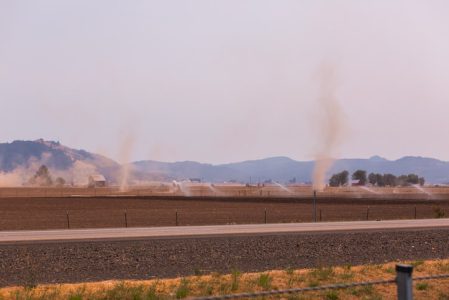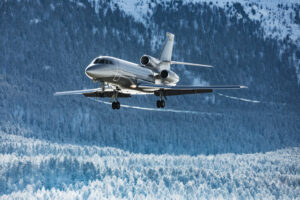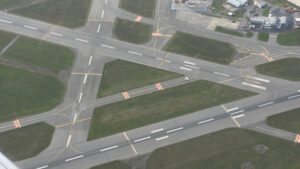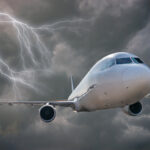Dust Devils are Aviation Weather Demons
Dust devils aren’t just charming little puffs of swirling dust. The NTSB is emphasizing the significant danger these miniature tornadoes pose to pilots, with their strength rivaling that of other aviation weather events such as tornadoes or waterspouts. These phenomena have contributed to over 170 aviation accidents, underscoring the importance of heeding the NTSB warning.
Commonly known as whirlwinds, dust devils typically emerge in warm, clear conditions, particularly in areas of strong surface heating where different surface types meet, like asphalt and dirt. These invisible spiraling aviation weather updrafts can catch pilots off guard, leading to sudden turbulence, loss of lift, or even total loss of control.
Recognizing these devils forming in suitable conditions is crucial. Like visible tornadoes and waterspouts, a dust devil becomes apparent as a spinning vertical column of dirt and debris. The key, as with other hazards, is to steer clear.
However, what about the unseen spiraling updrafts? Despite their invisibility, dust devils can cast shadows due to air density variations or leave tracks on the ground. Vigilance is paramount, especially in the Southwest United States where they are prevalent. Exercise caution during takeoff and landing and maintain higher altitudes when feasible in dust devil-prone areas.

Dust Devil Vigilance
Pilots need to maintain a high level of vigilance for various weather phenomena, including dust devils, which can potentially impact flight safety. Here are some reasons pilots should be on the lookout for this weather anomaly:
- Visibility Reduction: Dust devils can significantly reduce visibility in their vicinity, making it challenging for pilots to see other aircraft, obstacles, or even the runway during landing or takeoff phases.
- Sudden Wind Shear: Dust devils create localized areas of intense, rotating winds that can lead to sudden wind shear. This can affect an aircraft’s performance by unexpectedly altering its lift and speed.
- Turbulence: The rotating air in a dust devil can cause turbulence if flown through. This not only makes for an uncomfortable ride but can also stress the aircraft’s structure and potentially lead to loss of control in extreme cases.
- Engine Contamination: Dust and debris lifted by dust devils can be ingested by aircraft engines, leading to potential damage or reduced efficiency. This is particularly a concern for helicopters and low-flying aircraft.
- Impact on Ground Operations: Dust devils can disrupt ground operations, blowing debris across runways and taxiways, and posing risks to ground personnel and equipment.
- Microburst Potential: While different in nature, dust devils can indicate unstable atmospheric conditions that could also produce microbursts – downdrafts that spread out upon hitting the ground, creating hazardous wind conditions.
- Lightning Risk: In areas prone to thunderstorms, the same unstable conditions that foster dust devils can also lead to lightning strikes, which pose significant risks to aircraft in flight and on the ground.
- Hail: Similar to lightning, hail is associated with thunderstorms. Hail can cause severe damage to aircraft, particularly if encountered during takeoff or landing phases.
- Icing Conditions: In colder climates or at higher altitudes, pilots must be vigilant for icing conditions that can rapidly develop in the presence of moisture and cold temperatures, affecting aerodynamics and engine performance.
- Crosswind Challenges: Dust devils represent small-scale, intense examples of changing wind conditions. Pilots should always be prepared for crosswinds and sudden shifts in wind direction during takeoff and landing, as these can also occur with larger weather systems.
By maintaining awareness of these and other weather anomalies, pilots can better prepare for and respond to the dynamic conditions of the atmosphere, ensuring safer flights for themselves, their passengers, and cargo.
Should you spot a dust devil, report it promptly to ATC or on your unicom frequency to alert fellow aviators. If you inadvertently fly through one, conduct a thorough check for any damage upon landing. Nature’s reminder is clear – aviation weather demands respect. Stay vigilant and fly safe!
RELATED CTS TRAINING










